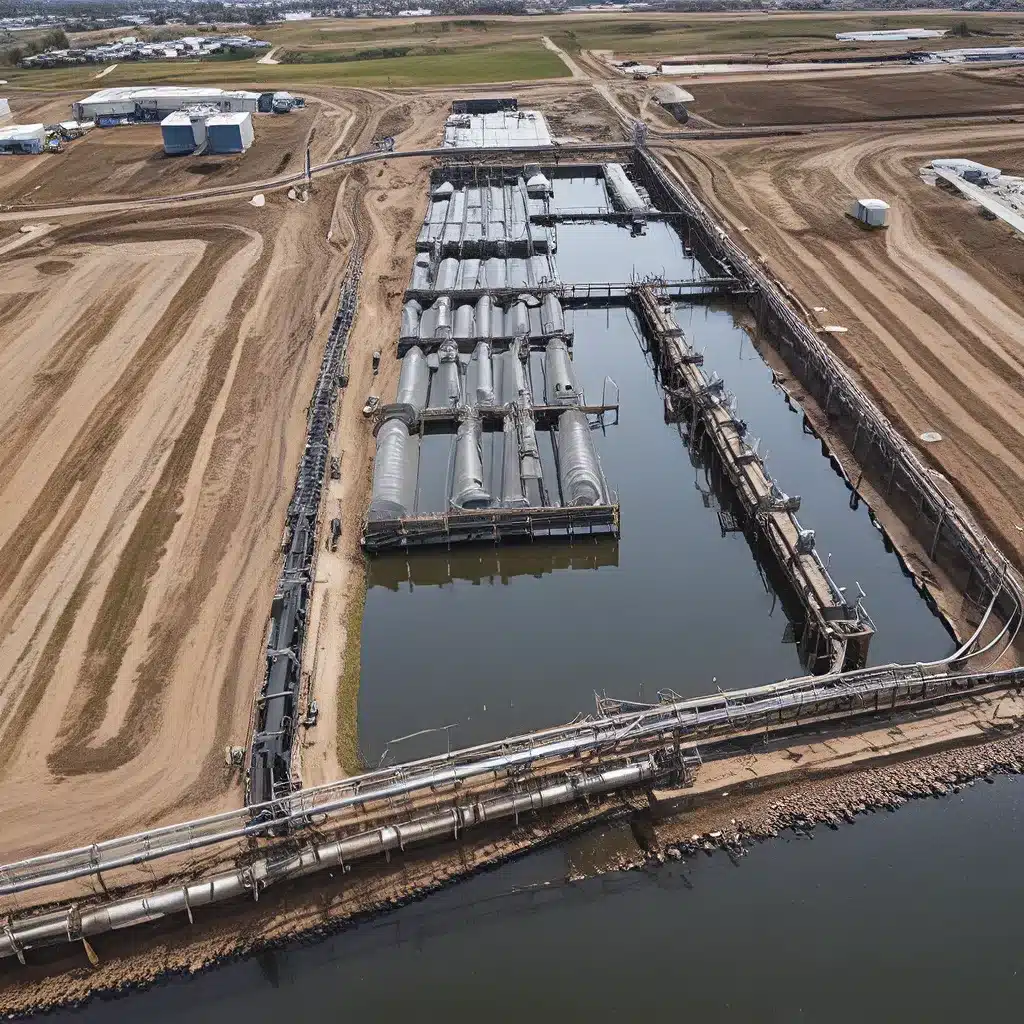
Navigating the Complexities of Wastewater Treatment
As a plant operator, I know the daily grind of running a wastewater treatment facility can feel like a never-ending battle against the tides of endless regulations, fluctuating influent, and energy-hungry processes. It’s easy to get bogged down in the minutiae, constantly playing catch-up with the ever-changing demands of the job. But what if I told you there’s a way to take back control and turn your plant into a well-oiled, efficient machine?
Enter the SPINS Process Control Method – a game-changing approach that empowers operators like you to master the complexities of wastewater treatment. Developed in the 1980s by the brilliant Lynn Marshal, this method offers a rapid and reliable way to assess your facility’s solids mass and distribution, transforming the guessing game of process control into a precise science.
Rapid Analysis for Real-Time Decision Making
At the heart of the SPINS method is its ability to deliver actionable data within just 15 minutes. By utilizing simple centrifuges, you can quickly gauge the solids concentrations in your sludge samples, turning the tide on the traditional laborious testing procedures. Imagine being able to analyze six or more samples at a time, no more waiting around for results – it’s like having a crystal ball for your plant’s performance.
The best part? Implementing the SPINS method doesn’t require a PhD in engineering or a team of highly trained technicians. With an initial investment of around $1,700, your facility can be equipped with all the necessary tools – a centrifuge, six test vials, a Settleometer, and a sludge core sampler. It’s a small price to pay for the kind of operational efficiency and control it can provide.
The Method in Motion
The SPINS method is all about tracking the quantity, quality, and location of the solids in your treatment process. It’s a tool that empowers you, the operator, to monitor the delicate balance of solids being added and removed from the system, ensuring the biological process remains in harmony. After all, this balance is critical for both the separation and nutrient conversion phases of wastewater treatment – two interdependent and essential steps for achieving compliance.
But the SPINS method doesn’t stop there. It also encourages you to incorporate process control testing for ammonia-N, using simple non-reportable test kits to provide a cost-effective way to keep tabs on the presence of this crucial nutrient. By combining solids testing and ammonia-N monitoring, you can fine-tune your treatment process and adapt to the ever-changing environment of the biological system.
Empowering Operators, Enhancing Facility Performance
The ultimate goal of the SPINS Process Control Method is to put you, the operator, firmly in the driver’s seat. No more feeling like the plant is running the show – this method equips you with the knowledge and tools needed to navigate the complexities of wastewater treatment, encouraging a proactive rather than reactive approach.
Think about it – when you have a clear understanding of your solids levels, distribution, and nutrient dynamics, you can make informed decisions to optimize your treatment process. No more guessing, no more uncertainty. Just solid (pun intended) data that allows you to stay one step ahead of the game.
Embracing the Future of Wastewater Management
But the SPINS method isn’t the only tool in your arsenal when it comes to empowering plant operators. Another revolutionary technology is the TwinPlant – a digital twin platform that transforms plant operations by creating a virtual replica of your facility.
With TwinPlant, you can access accurate real-time information and forecasts, empowering you to make informed decisions that lead to substantial benefits. From implementing advanced process control to optimizing aeration controllers, this integrated automation and digital twin platform puts the power to enhance your wastewater treatment plant firmly in your hands.
Harnessing the Power of AI for Efficient Aeration
Speaking of aeration, it’s a critical process in wastewater treatment, responsible for breaking down organic pollutants and ensuring the safety of the water for reuse or discharge. But it’s also a voracious energy consumer, accounting for up to 60% of a facility’s power requirements. That’s where Artificial Intelligence (AI) comes into play.
AI’s unparalleled ability to analyze vast amounts of data and make real-time adjustments has proven to be a game-changer in optimizing aeration systems. By leveraging AI, operators can reduce energy consumption while simultaneously improving process efficiency. From fine-tuning dissolved oxygen levels to predicting weather patterns and influent changes, AI-driven automation can streamline your operations and free you up to focus on higher-level strategic initiatives.
But the benefits of AI-optimized aeration go beyond just energy savings. This technology also holds promise for addressing emerging contaminants like PFAS – those pesky “forever chemicals” that have been causing headaches for water treatment professionals worldwide. By enhancing aerobic biodegradation and promoting the formation of reactive species, an AI-powered aeration system can contribute to a more comprehensive approach to water quality management.
Embracing the Future, Together
As you can see, the future of wastewater management is bright, and it’s time for plant operators like you to take the lead. By embracing the SPINS Process Control Method, TwinPlant, and the power of AI, you can transform your facility into a model of efficiency, compliance, and environmental stewardship.
At Inland Waters Inc., we’re committed to equipping plant operators with the tools and strategies they need to thrive in this ever-evolving landscape. So, what are you waiting for? Let’s embark on a journey to empower your plant and leave a lasting impact on your community and the environment. The future of wastewater management is in your hands.


